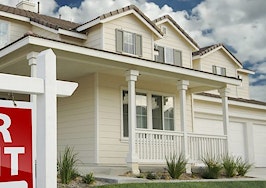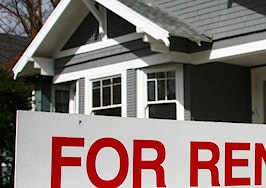- Real estate markets face a chronic shortage of inventory, especially affordable houses sought by millennials and other first-time buyers.
- From 2007 to 2013, America's housing stock deteriorated, especially homes owned by lower-income owners.
- Lower-income homeowners who owned more affordable homes were much less likely than higher-income households to make improvements, and those that did spent considerably less on those projects.
Sometimes the thorniest problems can be tamed if not resolved altogether with solutions that are easy to overlook. That might be the case with the chronic shortage of affordable housing that is keeping potential first-time homebuyers penned up in apartments as rents are rising at record rates, and interest rates are rising. Answers might be just found around the corner.
According to the National Association of Realtors, last year sales to first-time homebuyers declined for the third consecutive year and remained at their lowest point in nearly three decades. Record numbers of young families are looking to buy, yet slim inventories and rising prices are keeping them in rentals.
Very few builders are building new homes for the starter-home market, and not enough existing owners are in a position to sell their starter homes and move up.
[Tweet “Last year sales to first-time homebuyers declined for the third consecutive year. “]
Desperate demand and aging housing stock
Not only are inventories of affordable homes scarce, but demand is also driving up their prices at record rates faster than for more expensive homes.
Weiss Analytics segmentation reports show that in markets such as San Francisco, Los Angeles, Miami and Las Vegas, homes in the lowest price tiers are appreciating nearly twice as fast as median priced homes.
America’s housing stock also has suffered because of the housing recession. According to the Department of Housing and Urban Development, the median age of owner-occupied homes is now 37 years old, compared to 27 years old in 1993.
Approximately two-thirds of owner-occupied homes in the U.S. were built before 1980, with 40 percent built before 1970. Homes constructed after 2000 account for just 17 percent of the owner-occupied homes.
Older homes require more maintenance, upkeep and remodeling. But during the years 2007 to 2013, millions of homeowners lacked the equity to take on home improvements.
Lower-income homeowners are much less likely than higher-income households to make improvements, and those that do spend considerably less on those projects.
Among households between ages 35 and 64, only about half (51 percent) of those in the lowest income quintile reported undertaking a project in 2012–2013 compared with more than two-thirds of owners in the highest income quintile.
Middle-aged homeowners in the lowest income quintile who did make improvements spent just $2,900 annually — significantly less than the $8,600 average among highest-income homeowners.
According to Harvard Joint Center for Housing Studies, even owners in the middle-income quintiles spent 40 percent to 60 percent less on home remodeling projects than top-income owners.
[Tweet “Middle-income quintiles spent 40-60% less on home remodeling projects than top-income owners.”]
Older owners face the additional costs of making their house more accessible for senior living. Less than a quarter of homes occupied by older owners have the features to retire in place.
Although over three-quarters of households owned by owners aged 55 and over have a bedroom and full bath on the entry level, only about 60 percent of these homes have no steps between rooms, and less than half have a no-step entry.
Other accessibility features needed by those with more limited mobility are even less common. For example, only one home in 10 occupied by older owners has extra-wide hallways and doors, while less than 1 percent of older homeowners living in multi-story units have an in-home elevator.
Herein lies the opportunity to turn these unwanted properties into homes for first-time buyers. There’s a special joy that comes from giving an old house a new lease on life with a young family just starting out as homeowners, and there are many potential homebuyers out there looking to fulfill that role.
David Hicks is co-president of Dallas-based HomeVestors of America, Inc. Follow HomeVestors on Twitter or Facebook.




